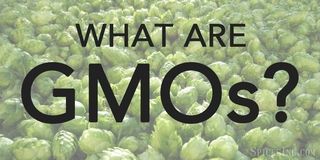What Are GMOs?
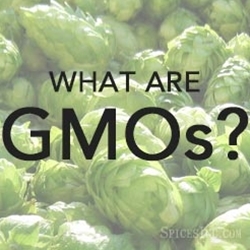
If you search for an answer on the internet, you might find the definition, "an organism whose genetic material has been altered using genetic engineering techniques." What are GMOs really, though? Genetic modification is a phrase that feels clinical and laboratory-like. It is a scary term, especially since there are natural genetic modifications too, not just the stuff of science fiction you will hear about on television! For example, your genes are modified when you are out in the sun for too long, and over time that modification can cause tanning, burning, or even skin cancer. This is a natural process, but it is a genetic modification, nonetheless.
Hank Green of SciShow, a YouTube channel dedicated to educating the general public on scientific matters, puts this in easier to understand language by saying, "a genetically modified organism [GMO] is simply an organism, like every other organism, that produces tens of thousands proteins, but one or two of them are proteins that were chosen specifically by humans." His explanation is plain and easy to absorb, but best of all it is accurate. Calling something a genetically modified organism can be a little misleading, however. Genetic modification is a process, not a final form of an organism. This process can combine plant, animal, bacterial, and viral genes that do not occur in nature or through natural methods, like crossbreeding, or it can combine more desirable traits from the same type of organism in the hopes that the new organism will have the best traits from those original parents.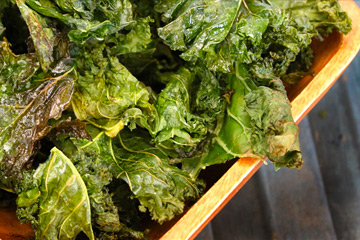
It's easy to fear something that warrants a label on the grocery store shelves, especially when there isn't as much public knowledge of what exactly a GMO is. "GMO-FREE!" is a popular declarative on plenty of foods, with a colorful little block usually found on a corner of the packaging of the product in question. When people, the media, and news outlets report on GMOs, they are usually referring to transgenic crops or crops that have had their DNA modified with the DNA of another organism. This is a process called transgenesis, which is by far the most common type of genetic modification happening in the food chain at this time. Through transgenesis, food has been modified to yield more, be higher in nutritional value, be more resistant to bugs, and resist the chemicals used to kill weeds. Every living organism on earth is made up of cells that carry their DNA, or genetic components. DNA is replicated constantly so the cells can divide properly and continue to do what they are supposed to do. Genetic information determines what cells need to do and what type of cells they are. So, a human heart cell would be different and contain different DNA and genetic information from a tomato cell.
Sometimes DNA can form mutations or break off in a way that will age the cells or change their structure moving forward permanently. These interruptions or changes in the DNA are normal, and every now and again they bring about more desirable traits in the organism in question. For example, all blue-eyed people have a common ancestor because blue eyes come from a single genetic mutation on a strand of DNA. So, without genetic modification and selective breeding, we wouldn't have broccoli, kale, kohlrabi, or Brussels sprouts. These vegetables all have one ancestor in common- the humble, wild cabbage. As Mark Twain famously said, "cauliflower is just cabbage with a college education."
A Short History of Genetic Modification
It was in the 1920s that scientists realized they could cause mutations in plants, and thus our desire for tinkering with plant genetics was born. At first, they would tamper with plants by using gamma rays or x-rays, as well as other types of radiation. This type of breeding called "mutation breeding" went widely unregulated and generally unknown to the public. Some of the genetic strains produced during this period of history are still present in the food chain today.

We have since moved past that into more sophisticated methods of modifying plants. In the 1980s, scientists took the genes of an antibiotic-resistant bacteria strain and successfully incorporated them into the genes of a tobacco plant. This was groundbreaking. Despite the fact that antibiotic-resistant tobacco plants are essentially useless, this experiment did show that single gene transfer from one organism to another was in fact possible. This is the marked birth of what we today call "transgenics." However, it wasn't until 1994 that the GM industry really made its mark on food. That year the FDA approved "Flavr Savr" tomatoes, a fruit that had been genetically modified to take longer to ripen so it would last longer on grocery store shelves. This was the first genetically engineered food to be marketed and sold to everyday consumers. Unfortunately, the tomato didn't last very long because people didn't really like its flavor and some consumers, especially those from European countries, were wary of the genetic alterations. Thus, the GMO debate began and is still quite a topic today.
Problems with Genetic Modification
There's a lot of misinformed marketing circulating about GMOs and this can cause a mass misunderstanding since people aren't usually fact-checking. This is especially true when it comes to news sources like news networks on television or newspapers. The public will often just assume that the information presented has been checked for accuracy and take it at face value. Sometimes, this leads to the spread of information that isn't exactly true, or that is paid for by corporations that want to tarnish the name of GMOs. Fear is a powerful tool that the masses will respond to quickly. Because of this, the problems with genetic modification are usually what you will hear about while the good is buried beneath that noise. There are some genuine concerns people have pointed out though, with these being the most frequently occurring.
-
Genetically modified food can be "owned" by a corporation, giving them a huge amount of power over the entire food supply. Like many things in life, Genetic Engineering is in fact a tool so it can be used in that good versus evil dichotomy. Unfortunately, this can easily become an example of when evil wins. If a crop is grown by a conventional farmer in a plot next to another farmer who does use genetically modified plants, there is a chance for cross-contamination. When the conventional farmer grows their crop, and it is discovered that there are genes belonging to a corporation that the farmer did not pay for the right to use within the crop, the farmer could potentially be sued by the corporation. Technically it would be considered theft, even if the farmer did not actively cross breed the GMO crop and the conventional crop. Consequently, there is also a concern for farmers who grow food that is destined for markets where GMOs are absolutely prohibited. If their crops are accidentally contaminated by GMO plants, their future crops may then be completely compromised and unsuitable for sale in their niche markets.
-
Terminator Seeds. What are terminator seeds? They are the seeds of genetically engineered foods that will grow into plants whose seeds are sterile. This means you cannot harvest seeds from the plants that come from terminator seeds for future use. These seeds are also called suicide seeds. They cannot be used to plant a new harvest the following year, so farmers must invest in new seeds every year. This is costly and has other implications because if you purchase terminator seeds and continue to do so, your money becomes tied up in the company you are buying from. If prices rise, you are subject to those price increases and have few options to get out of them, especially if you have a contract with the producers of the terminator seeds.
-
Ethical Concerns. If we are to continue to genetically engineer plants, what's to stop us from genetically engineering animals, too? Will this then lead to wider acceptance for genetic modification in general, leading to complacency when talking about genetically modifying people? If we do decide to genetically modify animals as some scientists have already begun doing with salmon, will the animals be negatively affected by the genetic modifications? Will they feel pain if they have too much growth hormone, for example? These are questions that we still do not have answers to.
-
A major concern the public has about genetically modified organisms is that they will cause reduced genetic diversity of plants and animals in the environment. What this means is that the DNA, which codes for proteins in an organism, will become more similar between individuals of a species. Genetic diversity is directly related to biodiversity, the variability in the traits of organisms that make up an ecosystem because diversity in DNA will inform the characteristics of the organisms that make up a population. Maintaining genetic diversity is important for the environment and agriculture because increased variability in DNA will provide a better opportunity for organisms to adapt to a changing environment.
Whether or not you have questions about GMOs, it is important that you look for your own information from reliable, unbiased sources. You are very likely to find biased opinions on anti-GMO websites, but you are also likely to find biased information on pro-GMO websites as well. The best sources for this sort of information would be research documents or published journals. Look for multiples that have all reached the same conclusions to form your own opinions and remember to scan documents that might not mirror your own views! If you are for GMOs, you may find yourself only searching "what's good about GMOs?" Remember to look through the bad stuff too, if you find it! Learn about both sides of the story.
How do GMOs Affect Genetic Diversity?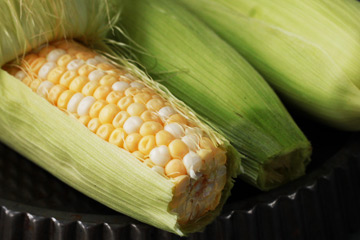
Worrying about how GMOs might affect genetic diversity is often an argument against the whole idea of GMOs. Genetic diversity is necessary, crucial even, for the adaptation of plants to their environments. Think "survival of the fittest." If a plant is modified genetically, then it will either have an unfair advantage out in the wild or it will actually be genetically weaker because it is harder for a "perfected" plant to adapt. This creates a problem because the course of natural selection is then permanently interrupted. The other concern is that genetically modified organisms will cross-breed with genetically wild organisms and create breeds that may take over resources from wild plants. Further research is needed to see how introducing GMOs to newer crops could potentially affect the crops surrounding them. For now, there are methods to prevent unintentional cross-breeding. An example of this would be a buffer zone or a large space between crops left empty with the hopes that the plants will continue to self-pollinate and not accidentally cross with other similar crops. After all, if genetically modified wheat and wild wheat do end up near one another, they are still genetically compatible enough to produce offspring.
How Are GMOs Produced?
There are a few methods used to produce GMOs. Gene guns do exactly what their name implies- shoot DNA into plant cells. Gene guns are mostly used on corn and rice species. They shoot the plant with the desired genes which are called transgenes. In order to infiltrate the plant DNA, transgenes are put onto tiny particles of gold which are shot at the plant with high-pressure gas in a vacuum chamber. The gold dissolves once it is inside the cell, and then it is up to the plant to take on the desired gene. After the genes take, the plant can then be used to breed more of that crop with the desired gene.
Another method that is much more effective is using a bacterium called "agrobacteria" that lives in the soil. This plant parasite has an extra section of DNA called a plasmid. A plasmid can move outside of a bacterium on its own accord and implant DNA into the plants. In nature, the plasmid does this to manipulate the plant into making food for the bacteria. In GMOs, scientists can manipulate the plasmid into carrying new, desirable traits' genes into the plant.
Once the GMO is grown successfully, it must be incorporated into a conventional crop for a few generations before it can effectively be a transgenic, genetically modified crop. It can take as many as 15 years for the new GMO crop to become part of the food supply. This process is called "backcross breeding."
Are GMOs Bad for You?
The short answer is no, they are generally not bad for you or your health. Genetic modification in something like papaya to be more resistant to a bacterium that would otherwise wipe out the papaya crop is not a bad genetic modification to have, and in fact, is helpful for papaya farmers and their livelihood or economic standing. Genetic modification of a human being would have other implications, and that's understandable to be uncertain, but GMOs for right now are strictly referring to plants.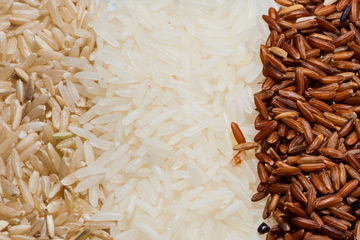
In fact, genetic modification has made some foods healthier. This is the case with golden rice. In the early 2000s, Golden Rice was developed to help combat poor nutrition in certain underdeveloped areas of the world. This rice is biofortified, or genetically modified, to have more folate, zinc, and iron. It will also have a high Vitamin A concentration. Vitamin A deficiency is the leading cause of irreversible childhood blindness in these underdeveloped areas. Pregnant mothers who do not have the right amount of folate in their diets can give birth to children with birth defects. Through genetic engineering of a type of rice that is already found in the diets of people in underdeveloped countries, scientists have helped improve the quality of life and thus the life expectancy.
GMOs are already in your diet. Traits that have been modified by humans have been present in corn and soybean crops for decades. Introduced in the 90s, the ability to resist the herbicide glyphosate has become an integral part of these two crops specifically, since they are so important to the food industry. Nearly 90% of soybeans and 70% of the corn grown in the United States has this trait, called the "Roundup Ready" trait.
This trait is named as such because it causes the plants to be more resistant to the widely used herbicide Roundup. Roundup can be used on the fields with little to no harmful effect on the crops while eliminating the weeds or other plants that may be stealing resources from the main crops.
It's important to review research that has been replicated and considered safe several times before you jump the gun. Educate yourself and decide on your own what you are comfortable with eating. For some, this does not include GMOs. For others, genetic modification isn't a big deal, since this helps the crops thrive in undesirable conditions or provides more nutrition for underdeveloped areas where access to food, in general, is scarce and unreliable.
Read More
Sources Used
Genetically Modified Foods and Social Concerns
An article focused on the discussion about GMOs and the most viable way for farmers to continue to feed the growing population. There is a focus on the social and ethical implications of genetically modifying food.
This website discusses the science and politics of GMOs, as well as gives easily digestible information about GMOs in general. This includes a good definition of what exactly a GMO is. There is information given for some of the most frequently asked questions about GMOs, including "Are GMO crops safe?"
All Blue Eyed People Have A Common Ancestor
Used as an example for genetic modification or mutation that occurs naturally, this source is an article that provides evidence of a common ancestor shared by all people with blue eyes.
GM Salmon that Grows and Grows
This article explores the GM salmon that may soon be introduced to the market for consumers to purchase and eat. The discussion here is that genetically modifying fish will not cause adverse health effects on humans.
How GMOs Can Influence Genetic Diversity
There is some concern that allowing GMOs into the food chain more widely will cause issues for the genetic diversity of crops. This article illuminates some of the problems and potential solutions for these issues.
How Genetically Modified Crops Have Transformed Rural America
Highlighting "Roundup Ready" crops, this article discusses what has been done to the rural farming landscape and what could potentially come in the future.

